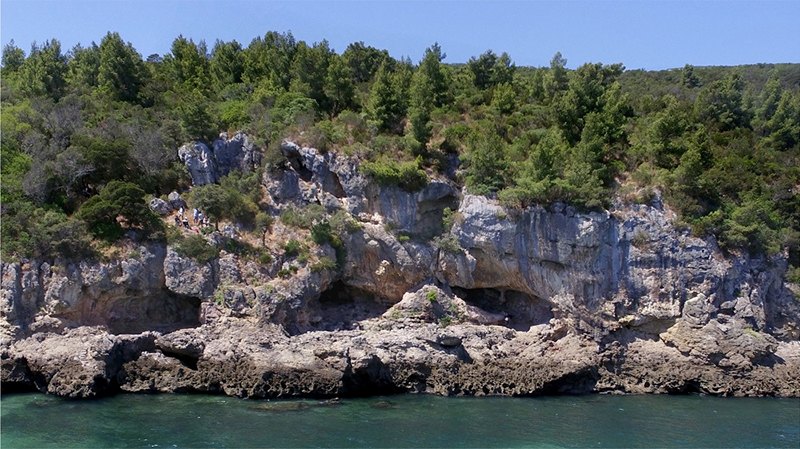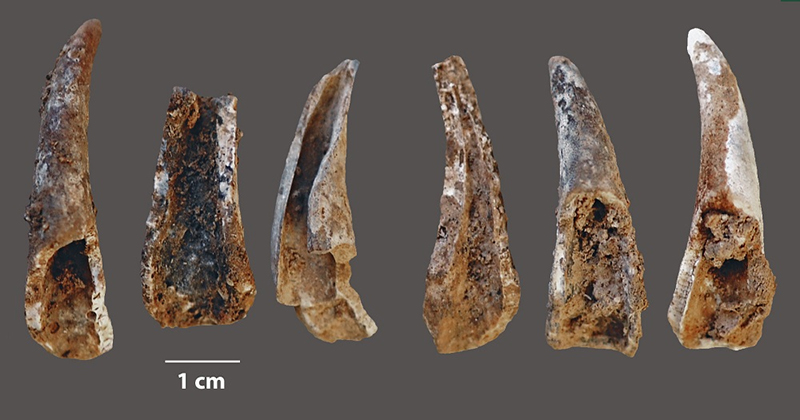Neanderthals were apparently much more partial to seafood than previously thought: new research shows that Neanderthal communities living in Portugal during the last ice age were just as keen on fishing as our modern human ancestors.
Molluscs, crustaceans, fish, birds, and marine mammals like dolphins and seals made up as much as half the diet of these Iberian ancients, the new study shows. That makes them resourceful fisher-hunter-gatherers, with behaviours closer to modern-day Homo sapiens than anyone realised.
The excavation at the cave of Figueira Brava near Setubal in Portugal revealed middens (domestic waste dumps) dated to around 106,000 and 86,000 years ago, packed with bones and shells from marine animals. These would have been eaten alongside more traditional fare like deer and goats.
 The Figueira Brava cave. (Pedro Souto/João Zilhão)
The Figueira Brava cave. (Pedro Souto/João Zilhão)
The finding is a significant one – the fatty acids provided by this sort of seafood diet, such as Omega-3, can boost brain development. These sorts of eating habits perhaps contributed to the "emergence of cognitive and behavioural modernity" in ancient people, the researchers say.
"Figueira Brava provides the first record of significant marine resource consumption among Europe's Neanderthals," write the researchers in their published paper.
"Consistent with rapidly accumulating evidence that Neanderthals possessed a fully symbolic material culture, the subsistence evidence reported here further questions the behavioural gap once thought to separate them from modern humans."
The sheer amount of seafood remains discovered, and the distance of the settlement from the coast (about two kilometres or a little over a mile), suggests that Neanderthals used baskets and bags to go fishing with, the researchers say.
This ability to plunder food from seas and rivers has long been regarded as an exclusively human trait, not something we shared with Neanderthals – and that makes the findings at this coastal site significant.
Previous evidence for a seafood diet amongst Neanderthals has been patchy: while it has been observed in other parts of the world, it hasn't been clear just how widespread these evolving eating habits actually were.
 Recovered fragments of Cancer pagurus (brown crab). (Mariana Nabais/João Zilhão)
Recovered fragments of Cancer pagurus (brown crab). (Mariana Nabais/João Zilhão)
Experts know much more about the diets of early modern humans in southern Africa around the same time, and the new study suggests that the make-up of this diet isn't all that different from the one adopted by Neanderthals who lived by the coast of Portugal.
Considering that snacking on seafood and exploiting marine resources could well have played a big part in triggering the expansion of the early human beings and pushing forward the increasing sophistication of our societies, pinning down exactly when and where it happened is an intriguing challenge for anthropologists.
As comprehensive as this discovery is, it's only one part of the world – we don't have a pattern yet. The researchers think that traces of other similar communities may have been washed away from rising sea levels during the end of the last ice age, so there might not be any more to find.
Even so, it sheds substantially more light on the lifestyles and behaviours of the Neanderthals – and suggests that in their taste for seafood at least, they perhaps weren't all that different from our early ancestors.
The research has been published in Science.
